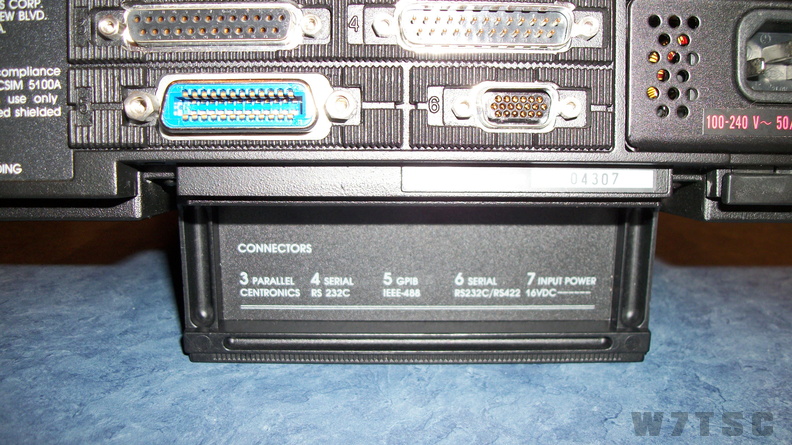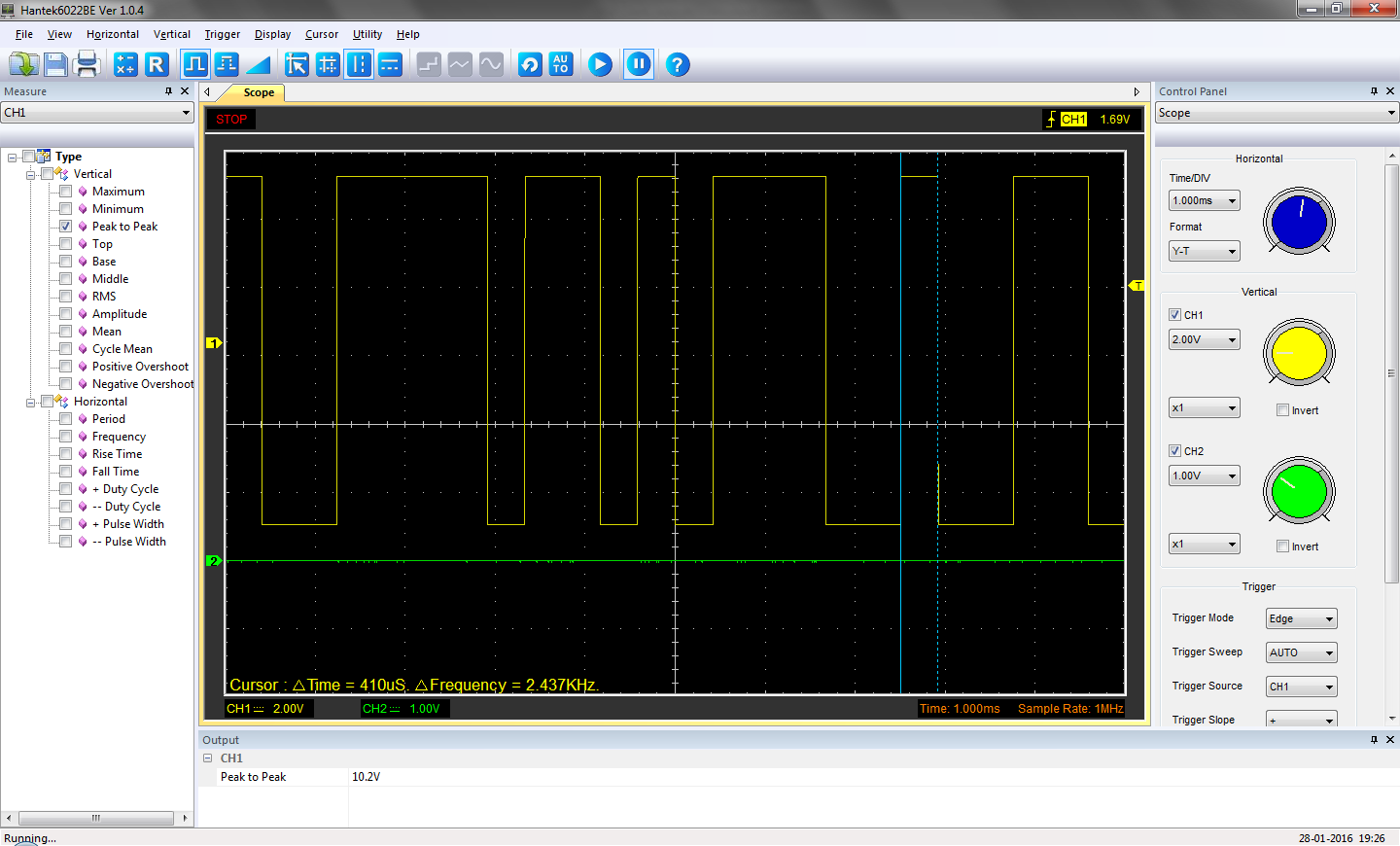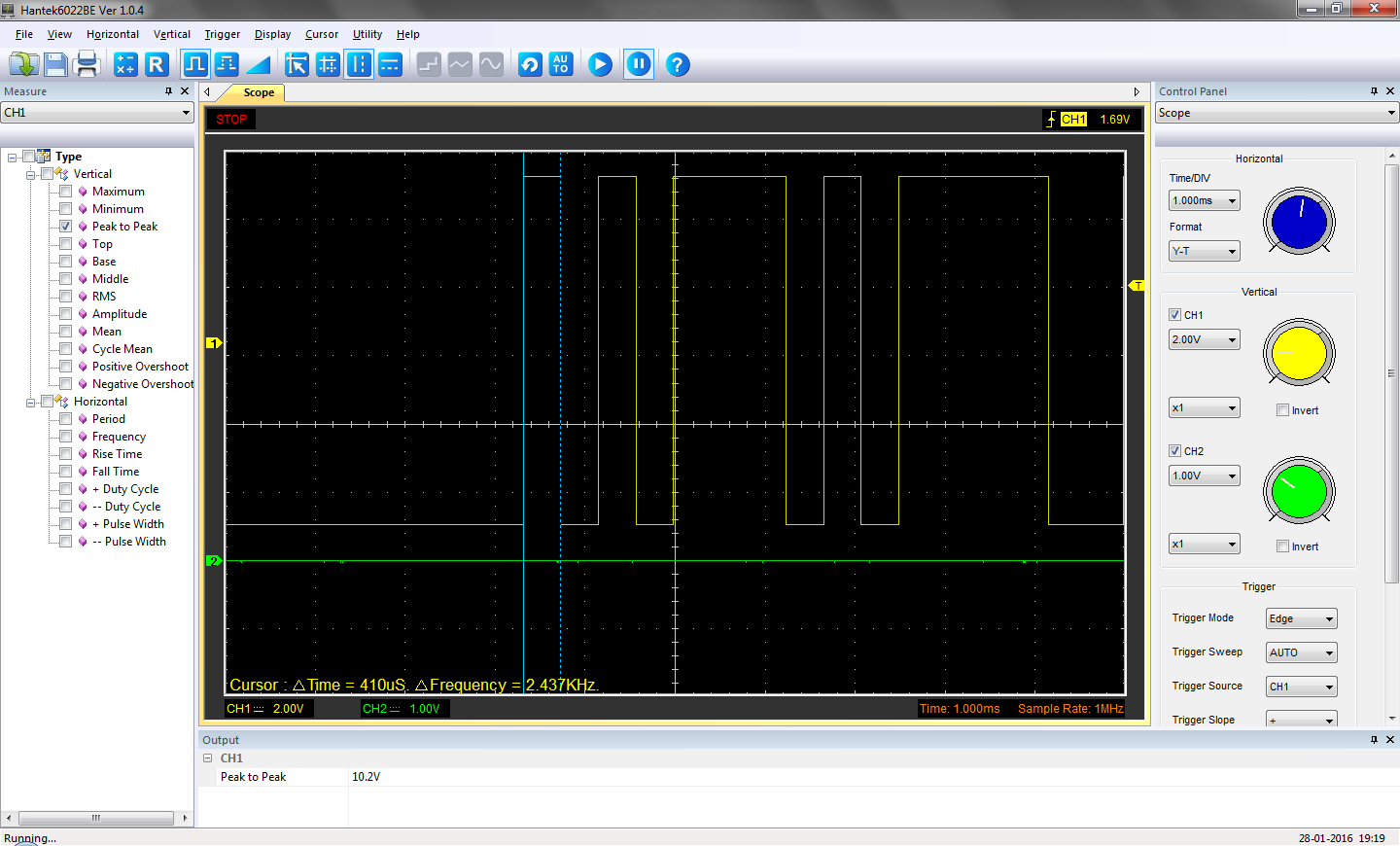During my research and work to use a modern day laptop computer with the AN/TSC-60(V)9 HF Communications Facility, the question came up as to whether or not the serial data from the RS232C port on the GRiD laptop computer was the same as what a modern day computer would put out. There was concern that GRiD may have done something "special" with the serial port signaling, either with voltage, baud rate or something else. This article explores that question in depth and provides technical details to show there is no difference between what the GRiD provides versus a modern computer using a suitable USB-to-Serial converter.
What we are essentially testing here is the ACM Executive HF-80 radio control application used in the TSC-60 facility. This is a 16-bit DOS application that runs on GRiD DOS, on a GRiD GRIDCASE laptop. The application controls the radios through a 25-pin RS232C port on the back of the GRiD, connected to a serial translator inside the facility. In a previous article I showed how we can run the application on a modern 64-bit laptop computer running Windows 7 by using a third party x86 emulator called DOSBox. We need to make sure that when the application runs on the modern computer, the serial port signaling is essentially the same.
The GRiD laptop in this case uses a 25-pin serial port labeled as RS232C; the number 4 port in this photo.

The first thing I needed to do was check the standards for serial port communications to find out if there was anything special about the C designation. I started with an Internet search and after browsing several pages with similar information, I found National Instruments had the best and most concise explanation on this page:
http://digital.ni.com/public.nsf/allkb/1C8F13D0806056F886256FAC00649176
On there, National Instruments states:
"The RS-232 Standard has gone through several revisions through the years. In the original RS-232, the signal would flip between positive and negative 25 volts. There were then three revisions, RS-232A, RS-232B, and RS-232C, which lowered the acceptable voltage from 25 to 12 to 5 volts. In 1969, the Electronic Industries Association Standards Committee adopted RS-232C, as a standard for computer manufacturers. Because this adoption date was so long ago, most manufacturers, including National Instruments, have dropped the "C" from the name and simply refer to the protocol as RS-232. In common, modern usage, there is no difference between RS-232 and RS-232C, protocol."
Therefore, the GRiD serial port was already using the latest standard and should operate the same as a modern day computer. Since the C specification is essentially the latest, then whatever laptop has a serial port made today should be compatible. However, not many laptops are available with a 9-pin or 25-pin serial port anymore. Although some fully rugged Dell and Panasonic laptops and tablets can still be ordered with a 9-pin serial port, the fact is they are very rare or non-existent on laptops and tablets sold to the general public today.
In a previous article I published title "ACMEXEC Talking COM1 via USB" I explored how to use an FTDI USB-to-Serial port converter to get RS232 data from a modern laptop USB port, to a 9-pin serial and through a 9-pin to 25-pin adapter. The work at this point was to test the signaling coming from each computer; the GRiD directly from the 25-pin serial port, and the modern computer coming out of the USB-to-Serial adaptor.
To perform these tests I used a simple Hantek 6022BE software driven oscilloscope. Although not a high-end piece of test equipment it would be sufficient to check the signaling from both computers. There are two tests that we need to perform; one to check the voltage output and the other to check the baud rate. Not knowing specifically what peak-to-peak voltage the AN/TSC-60(V)9 facility would require, I simply wanted to make sure the modern computer I wanted to use would put out the same or similar voltage as the original GRiD.
The baud rate would also need to be the same when the application ran on the new computer as it was on the GRiD; however, I had no real reference as to what it was supposed to be initially, though I later found it documented to be 2400 baud.
The transmit output on the 25-pin serial port is on pin 2, while the transmit output on the 9-pin serial port is pin 3. Without any radio equipment hooked up, the application should continue to poll through the serial port. This would allow me to test the signaling for both voltage and baud rate. The oscilloscope does not calculate "baud" rate for me, therefore I had to find a reference to figure out how to do that from the timing on the scope. I found that reference here:
https://www.kumari.net/index.php/random/37-determing-unknown-baud-rate
To calculate the baud rate, measure the time of the shortest pulse and take the reciprocal. From the example given on the site, calculate the reciprocal of a pulse width of 26µs. In math, that means calculate 1/26µs or (1/26*106) = 38461 and round this to the closest real baud rate, 38400, or 34.8k. The web site also contains a handy chart for making quick reference so we don't have to try and calculate that in our heads or fumble for a calculator. I've replicated that chart here.
| Time | Baud Rate | Time | Baud Rate |
| 3333µs (3.3ms) | 300 | 52µs | 19200 |
| 833µs | 1200 | 34µs | 28800 |
| 416µs | 2400 | 26µs | 38400 |
| 208µs | 4800 | 17.3µs | 57600 |
| 104µs | 9600 | 8µs | 115200 |
| 69µs | 14400 | 4.34µs | 230400 |
Starting the ACM Executive Application on the GRiD with pin 2 of the 25-pin port attached to the oscilloscope, we find the signal is 10.2V peak-to-peak with a minimum pulse width of 410uS, which translates to 2400 baud.

This is our baseline; the 10.2V peak-to-peak signal is 5.1V either side of reference ground, which adheres to the RS232C standard. From the information on the National Instruments web site, this should be the same voltage output from a modern computer, or in our case, the FTDI USB-to-Serial converter cable.
We reset to test the signaling on our modern 64-bit Windows 7 laptop with the FTDI USB-to-Serial converter and 9-pin to 25-pin adapter cable. We run the ACMEXEC application in a DOSBox 0.74 emulator window after making appropriate settings in DOSBox to hook COM1 which our converter cable has been assigned to.
Again, we hook our oscilloscope to pin 2 of the 25-pin connector at the end of our adapter cable.
The signal is virtually identical. The modern computer with the USB-to-Serial converter shows a 10.2V peak-to-peak voltage (5.1V either side of ground). The baud rate also calculates to 2400. The interesting item of note is that we have the COM1 port set to 9600 baud via the Device Manager; however, the application itself sets the COM1 port baud rate to 2400, therefore ignoring the operating system setting from the Device Manager.
This testing has proven there is nothing "special" about the serial port voltage or baud rate signaling on this particular GRiD laptop computer. I expect this to be true of -any- GRiD laptop computer with an RS232 serial port. Hopefully this information will have proven helpful.
Asa Jay Laughton
MSgt, USAFR, Retired
W7TSC - Grid DN17EP
email: This email address is being protected from spambots. You need JavaScript enabled to view it.
Microsoft and Windows are either registered trademarks or trademarks of Microsoft Corporation in the United States and/or other countries.

